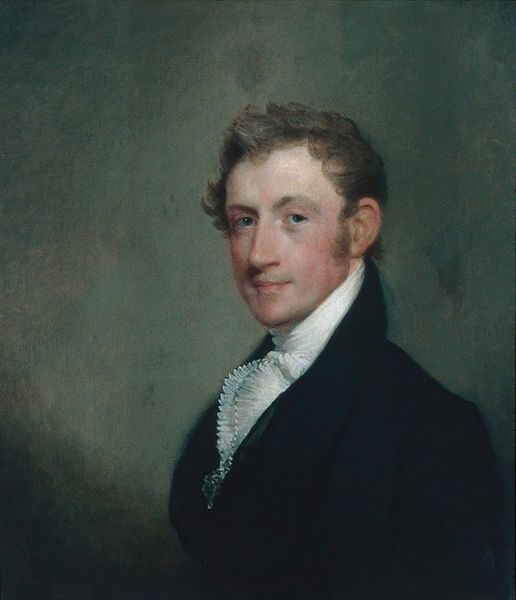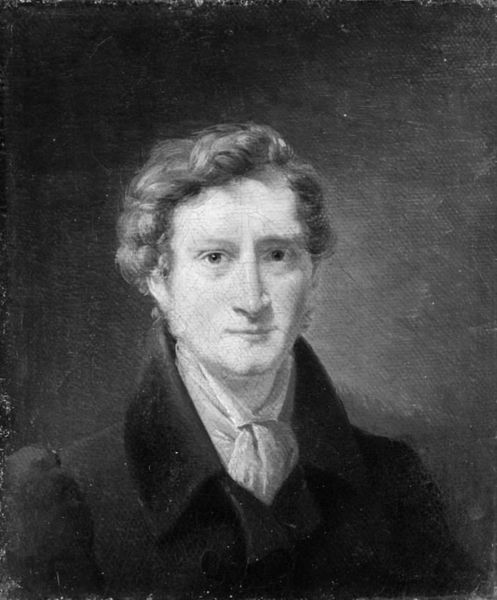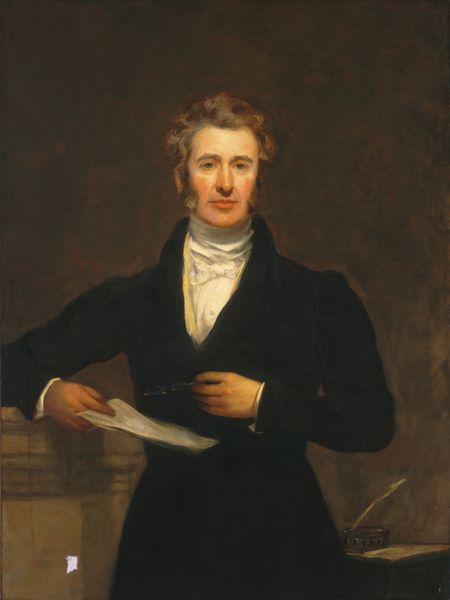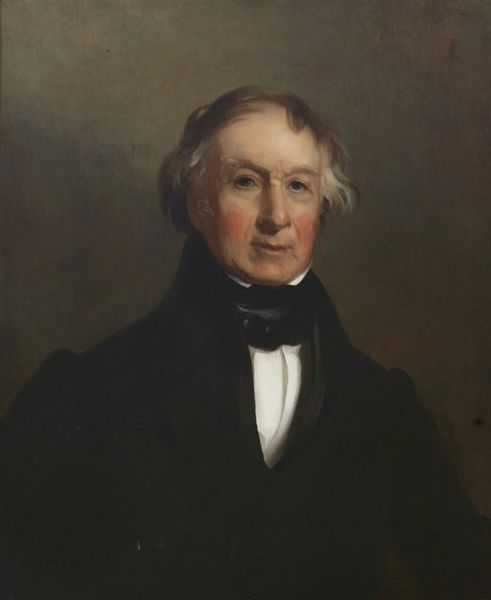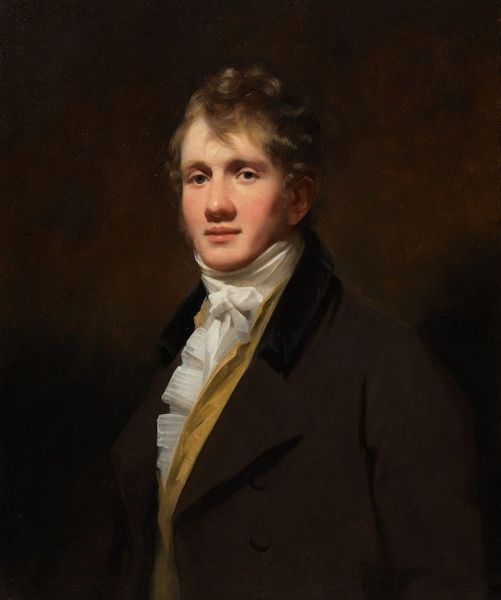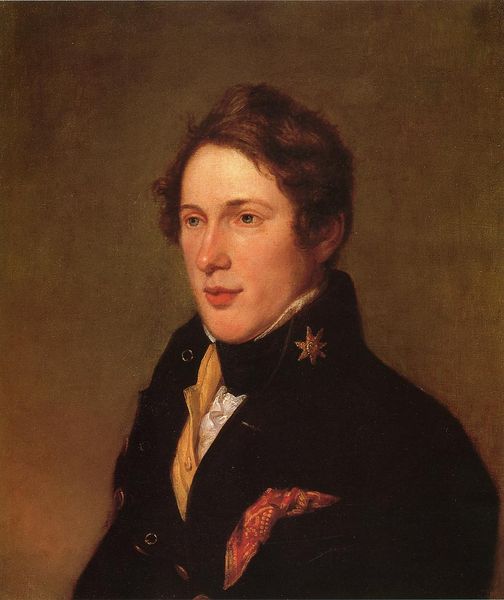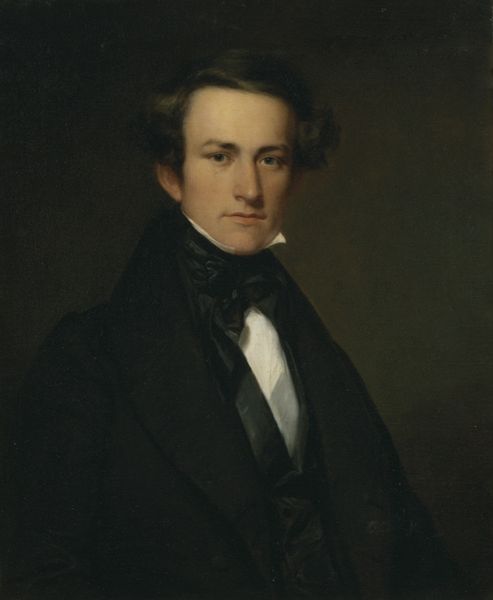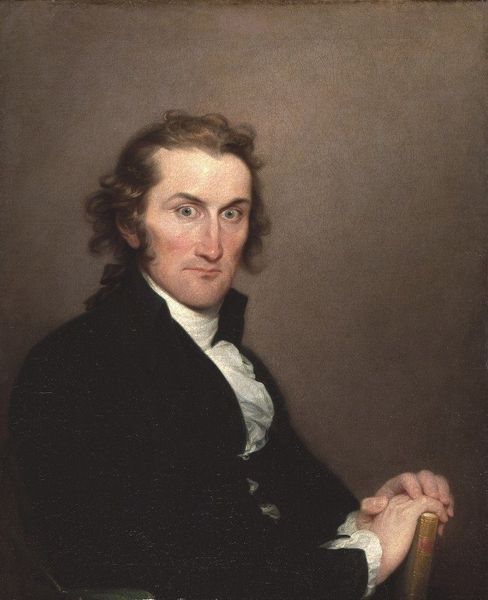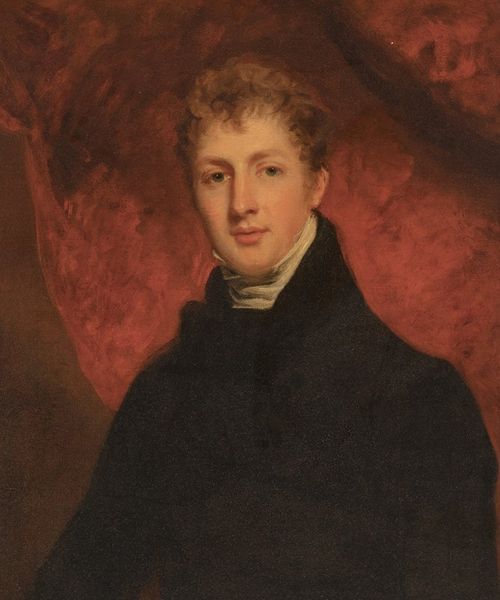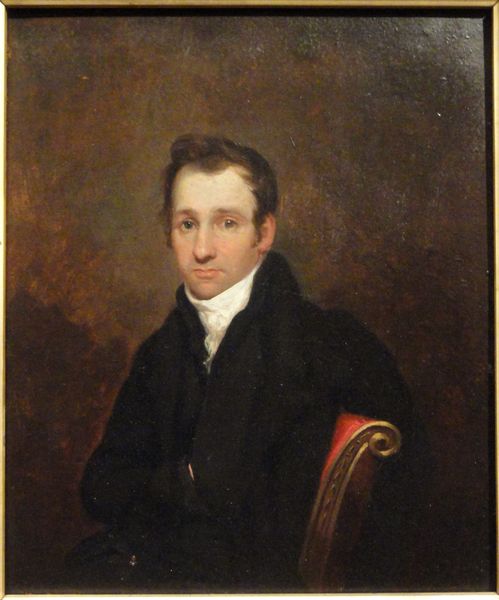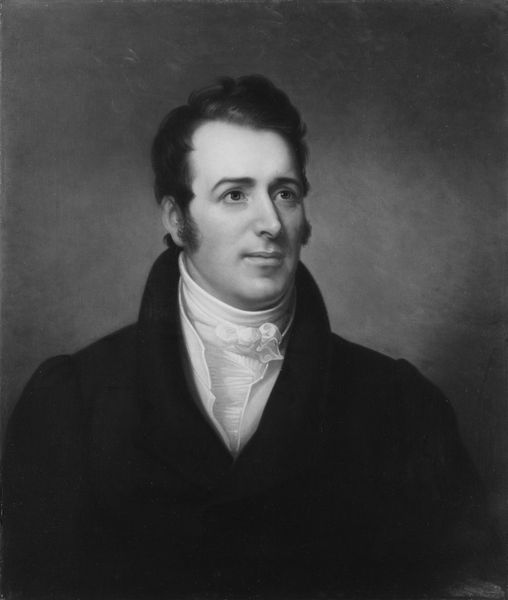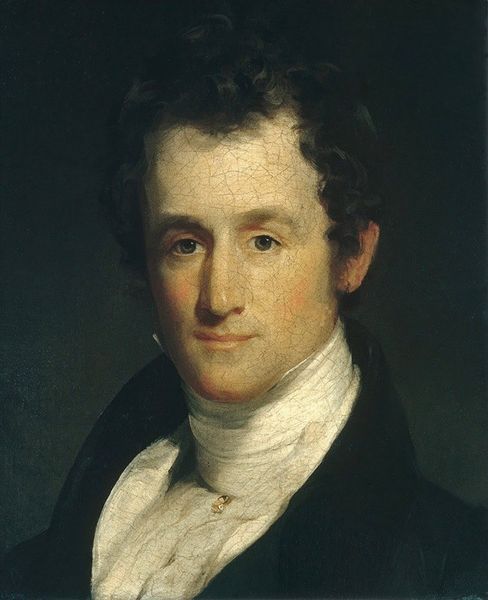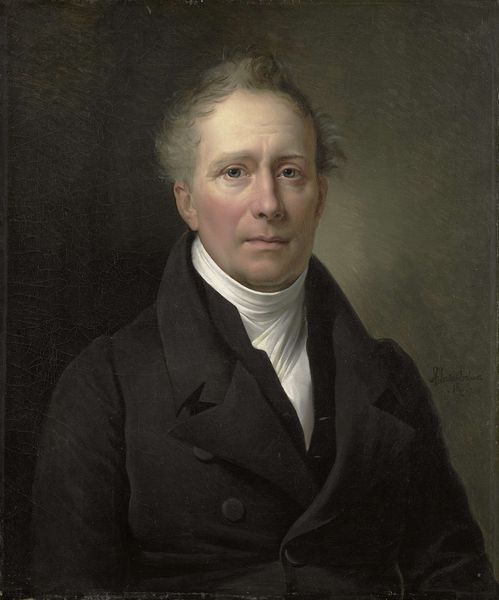
painting, oil-paint
#
portrait
#
portrait image
#
portrait
#
painting
#
oil-paint
#
figuration
#
portrait reference
#
portrait head and shoulder
#
romanticism
#
portrait drawing
#
facial portrait
#
academic-art
#
lady
#
portrait art
#
fine art portrait
#
celebrity portrait
#
digital portrait
Copyright: Public domain
Curator: Immediately striking. There's something almost melancholic about this portrait – a reserved intensity, if you will. Editor: That's Thomas Sully's "Levi Fletcher," painted around 1830. Sully was highly sought after in his time, particularly for his portraits of prominent figures in American society. Curator: Well, he certainly captures something of the individual. You sense the weight of societal expectations, the performance of identity so common in that era. Look at the subtle detailing on his face; those shadows hinting at perhaps hidden struggles, maybe the weight of the American dream. Editor: Sully’s technique really elevated portraiture. The looseness of the brushstrokes, particularly in the background, allows Fletcher to emerge almost theatrically from the shadows, directing the viewer's complete attention to him. This wasn't simply about capturing a likeness; it was about constructing an image. Curator: Precisely! And considering the historical context, the prevailing notions of masculinity, power dynamics in the early republic, are we really seeing Fletcher himself, or are we viewing a representation tailored for public consumption? And what about the absent gaze? What are they gazing at? Do they represent any part of his role in a capitalistic market? Editor: It's important to note how the art world and portraiture itself were institutionalized. Portraits such as these often served as records, affirmations of status, and contributions to a visual history carefully curated. The choices Sully makes – the lighting, pose, costume – all contribute to constructing that historical narrative. Curator: I am particularly moved by the expression, that sense of contemplation mixed with underlying resolve. Editor: For me, its success lies in Sully's ability to weave together technical mastery with an acute awareness of the social and cultural forces at play. It’s more than just a handsome painting; it's a document that reveals a lot about early 19th century aspirations and the construction of American identity. Curator: Indeed, a layered representation reflecting intersectional expectations of class, race, gender, and a certain ideal during those times, all mediated by Sully's own social positioning. Editor: And now, standing before this artwork, it also enables us to confront, negotiate, and question those very histories.
Comments
No comments
Be the first to comment and join the conversation on the ultimate creative platform.
